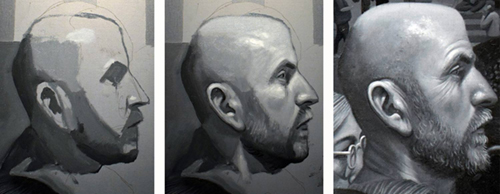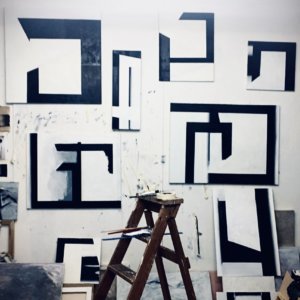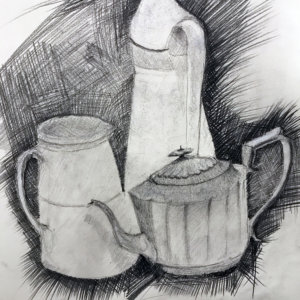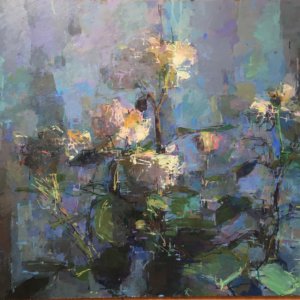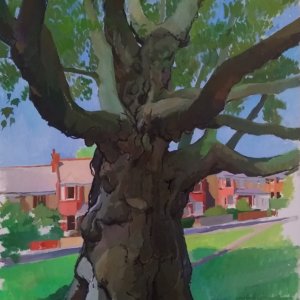Full Course Details
What topics does the course cover?
- Portrait painting (with elements of drawing)
- Shape
- Tone (light & dark)
- Colour
- Glazing Technique
- Grisaille Technique (grey underpainting)
- Verdaccio Technique (green underpainting, used for skin)
- Portrait Composition
- Drawing/Sketching
By the end of this course you will:
Have a further understanding of some figurative artists’ work, figurative painting and drawing, design and composition, the generation of ideas and processes behind making compositions that explore a certain theme or idea. Designed to help students visualise and develop their own ideas, you will gain confidence in picture-making as a result of this course.
What level is the course and do I need any particular skills?
Have a further understanding of how to identify shape, tone and colour, with specific regard to painting portraits. Have experience of using glazing techniques, using grey underpainting to create a sense of 3D form (grisaille technique); using green underpainting (verdaccio technique), to help create more convincing skin tones; and different applications of thickness and texture of paint.
What level is the course and do I need any particular skills?
Although all levels are welcome, it is advised that students have at least some basic drawing/and or painting experience.
What will I be required to do during the online tutorials, and will I be required to do homework?
Presentations are given by Carl Randall to illustrate methods and ideas, with which students will then use to make their own work during the lesson, in response to what was shown in the presentations. It is advisable for students to have a pencil and paper to hand, to take notes during presentations. Homework is optional, and not a strict requirement in order to take part in the course. However, to get the most out of the learning experience, students are strongly encouraged to continue with the painting started during lessons in their own time, and to repeat things learnt outside of lessons. Images related to lessons are provided by the tutor, except for project during lessons 4-6.
Use of ‘Padlet’.
Students will be required to upload their work onto the Heatherleys ‘Padlet’ account (a free online sharing and teaching and sharing platform). This will allow the tutor and other students to see work you produce, and for group discussions to occur. Details of this will be sent to you nearer the time of the start of the course. The tutor will show you how to use it, if you are not familiar with it. Access to a digital camera will be required for this (mobile phone is fine), in order to take photos of your work and upload it onto Padlet.
Notes about online meetings
For privacy and copyright reasons, all forms of recording of the presentations and lessons are strictly prohibited (audio, video, screen-grabs etc) – without the express permission of the tutor (for example when the tutor may occasionally instruct you to do so, as part of the learning exercise).
Please also note that presentations start exactly at start of the scheduled meeting. Due to the nature of hosting meetings over Zoom, no latecomers will be admitted. Therefore, please ensure you are on time. Usually meetings are open 30 mins in advance of their starting, which you welcome to sign into early.
The school or tutor cannot be responsible for students not being able to sign in on time, or for any internet connection problems on the students side.
COURSE SCHEDULE & DESCRIPTION:
Lesson 1: Shape (drawing)
1/3 (three lesson project).
Using pencil on paper, students will be taught how to identify shape within the human head, with regard to patterns & shapes created by light & shadow.
Materials required: Canvas or canvas board (medium size), and a piece of paper the same size as the canvas (for example, if your canvas will be 45 x 35cm, then your piece of paper should also be 45 x 35cm). Graphite pencils (2B or 4B), paper, erasers.
Lesson 2: Tone (light & dark). Tonal underpainting in grey: grisaille technique.
2/3 (three lesson project).
Using black & white paint, a tonal portrait is created, using the drawing made in the first week as the blueprint.
Materials required: Painting paper or canvas, brushes, paints (only black & white), brushes, painting medium (eg. Oil Painting Medium, Liquin, Zest-it, or Linseed Oil).
Lesson 3: Colour on top of tonal underpainting: grisaille technique.
3/3 (three lesson project).
Colour is ‘glazed’ on top of previous lessons tonal painting.
Materials required: Painting paper or canvas, brushes, paints (full colour), brushes, painting medium (eg. Oil Painting Medium, Liquin, Zest-it, or Linseed Oil).
Note: for the following 3-lesson project, students create a portrait of someone they know (or a self-portrait), using their own photograph to work from (same photo for all 3 lessons).
Lesson 4 : Shape (drawing).
1/3 (three lesson project).
Using pencil on paper, students will be taught how to identify shape within the human head, with regard to patterns & shapes created by light & shadow. Own photograph required (same photo for all 3 lessons).
Materials required: Canvas or canvas board (medium size), and a piece of paper the same size as the canvas (for example, if your canvas will be 45 x 35cm, then your piece of paper should also be 45 x 35cm). Graphite pencils (2B or 4B), paper, erasers.
Lesson 5: Tonal underpainting in green: verdaccio technique.
2/3 (three lesson project).
A tonal underpainting is created using green (verdaccio), in preparation to create a full colour portrait in following lesson. Own photograph required (same photo for all 3 lessons).
Painting paper or canvas, brushes, paints (terre verte, sap green, grey green, white, black), brushes, painting medium (eg. Oil Painting Medium, Liquin, Zest-it, or Linseed Oil).
Lesson 6: Colour on top of tonal underpainting: verdaccio technique.
3/3 (three lesson project).
Colour is ‘glazed’ on top of previous lessons green tonal painting. Own photograph required (same photo for all 3 lessons).
Materials required: Painting paper or canvas, brushes, paints (full colour), brushes, painting medium (eg. Oil Painting Medium, Liquin, Zest-it, or Linseed Oil).
Lesson 7: Using thick paint and strong brush marks to create a portrait.
1/1 (one lesson project)
Materials required: Painting paper or canvas, brushes, paints (full colour), brushes, painting medium (eg. Oil Painting Medium, Liquin, Zest-it, or Linseed Oil).
Lesson 8: Using a palette knife to paint a portrait.
1/1 (one lesson project)
Materials required: Palette knife, painting paper or canvas, brushes, paints (full colour), brushes, painting medium (eg. Oil Painting Medium, Liquin, Zest-it, or Linseed Oil).
Lesson 9: Painting a portrait using variety of paint applications
1/2 (two lesson project)
Creating a portrait using a variety of different marks and paint applications.
Materials required: Painting paper or canvas, brushes, paints (full colour), brushes, painting medium (eg. Oil Painting Medium, Liquin, Zest-it, or Linseed Oil).
Lesson 10: Painting a portrait using variety of paint applications
2/2 (two lesson project)
Creating a portrait using a variety of different marks and paint applications.
Materials required: Palette knife, painting paper or canvas, brushes, paints (full colour), brushes, painting medium (eg. Oil Painting Medium, Liquin, Zest-it, or Linseed Oil)
